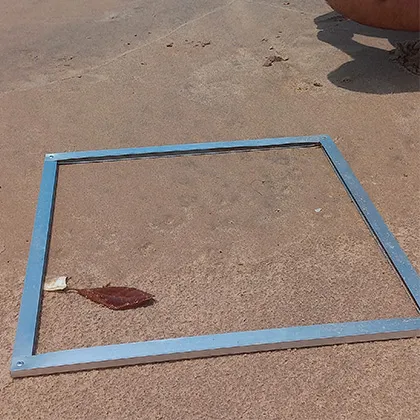
The Brazilian coast has received visitors with a different objective. Since April 2023, researcher from the Federal Institute of Goiás Guilherme Malafaia and a team of researchers have been traveling along the coast collecting portions of sand and seawater to assess the presence and composition of microplastics on the coast of each state in the country, through the MICROMar project . With the contribution of state and federal universities, including USP, more than a thousand beaches have already been visited, and the number of samples is expected to reach eight thousand.
The project wants to identify and quantify microplastics based on the diversity of the Brazilian coast, considering occupation, tourism and climatic characteristics.
“The great innovation of the project is not the study of microplastics, but the extension of the work”, highlights Marcelo Pompêo, professor at the Department of Ecology Institute of Biosciences (IB) at USP and one of the researchers involved, about the scope of the study in National territory. Microplastics are very small particles of plastic, up to five millimeters. They are divided into primary ones – used as raw materials in industries such as cosmetics and pharmaceuticals – and secondary ones, resulting from the fragmentation of larger pieces of plastic, that is, the one we discard and is not recycled.
As a pollutant, microplastic is a potential threat to the environment and the health of animals and humans. Therefore, efforts to find and analyze both their presence and the risk they represent have grown. “[Research] is necessary to overcome the lack of diagnoses on the topic in Brazil”, highlights Malafaia. Although the collections will only be completed in May, Malafaia says that the expeditions have already shown “that our beaches are highly polluted by microplastics. In all states it was possible to identify plastic particles on the beaches.” The researcher adds perspectives on the results: “the states of São Paulo, Paraná, Sergipe and Bahia will probably be among the most polluted”.
Expeditions and sample collections
During expeditions, the MICROMar project has already visited 1,190 beaches, with the only choice criterion being the possibility of access by land. “We seek to carry out collections on as many beaches as possible in order to allow the inclusion of areas with different characteristics, presenting variations in aspects and indicators, which will be important for us to relate to the levels of microplastic pollution on the Brazilian coast”, says Malafaia.
In São Paulo, for example, samples were collected on 88 beaches, from Ilha Comprida Sul, in Ilha Comprida, to Estaleiro beach, in Ubatuba. In total, there were five expeditions. The first took place in Paraíba, the second in Espírito Santo. The third included Bahia, Sergipe, Alagoas, Pernambuco and Rio Grande do Norte.
On Wednesday, collections were made in Amapá, Pará, Maranhão, Piauí and Ceará. The fifth, and last, was held in Rio Grande do Sul, Santa Catarina, Paraná, São Paulo and Rio de Janeiro.
The collections, on each of the beaches, are done by determining quadrants, which serve as a base for collecting sand and water. Each quadrant generates five sand samples. Water is collected in front of each sand collection point. Depending on the size of the shore, the beach can generate more or less material.
Despite being part of the project, USP did not directly participate in the field research. “USP’s contribution is to offer our expertise, the experience we have in microplastic analysis”, explains Pompêo.
Malafaia also clarifies that the work of USP, especially that of Professor Marcelo Pompêo’s research group, will contribute “above all, to the determination of risk and polluting load indices, and to the identification of factors or aspects that are contributing more and less with the pollution of the coast of São Paulo”. The team that works with Pompêo has also contributed to education, popularization and scientific dissemination actions.
Plastic and microplastic pollution in Brazil
In Brazil, the plastic recycling rate is 1.3%, below the global level, which is 9%. “Brazil, in particular, ranks 4th in the ranking of countries that produce the most plastic waste in the world, behind only the United States, China and India. Therefore, this scenario has a direct impact on the levels of microplastic pollution in ecosystems”, explains Malafaia. Microplastics are already linked to damage to the health of aquatic organisms and biomes. In the case of marine animals, for example, their consumption can generate a false feeling of satiety and affect other areas of the animal’s life, such as reproduction and growth. Pompêo recalls that “the sea is also bringing microplastics that come from abroad [from other countries]. It’s not just microplastic that’s coming from the Brazilian coast itself.”
“Removing microplastic from [everyday life] is impossible, but we can change its use. Everything that is considered single-use could be abolished, so that we can give microplastic a more ‘noble’ use, with products that are more durable”, adds Pompêo.
